De-extinction: the wooly mammoth is the biophysicist’s cancer
On my first day teaching bioinformatics, I brought Michael Crichton’s book Jurassic Park to
class. I showed the students a DNA sequence from the book – a long
string of A, T, C, and G that was supposed to form part of one dinosaur
gene. As a class exercise, I asked students to convert that string into a
protein sequence (it seems more bioinformatics teachers had the same idea).
The students were instantly intrigued. I attribute that class’
success to Jurassic Park. Both book and movie are embedded in our
collective imagination. Who isn’t enthralled by the possibility of
engineering dinosaur DNA and bringing the lumbering giants back to life?
Can we bring back the Tasmanian tiger? Mike Archer at TEDx. Photo by the author.
I was able to attend the TEDx DeExtinction event in DC, thanks to an awesome boss and crew,
who came along. There, molecular biologists and conservationists
discussed the possibility of resurrecting extinct animals, while fans
vouched for their favorite species (hello, dire wolf). The lecturers presented the technology, while ethicists and ecologists watched in horror.
There was talk of
bringing back the wooly mammoth, passenger pigeon, bucardo, Tasmanian
tiger and others. But like speaker and “molecular paleontologist” Beth
Shapiro points out, we are still very far from step one. No surprise
here. I went to this event not expecting to see a herd of mammoths any
time soon. I went there to marvel at technology and its applications.
Or, like my colleague described it, “the moon race for biologists”.
Conservation efforts can benefit from de-extinction technologies.
Lack of genetic diversity among captive breed populations is a serious
problem. Breeding programs and SSPs (species survival plan) keep
a studbook: a record of the genetic make up of all individuals of that
species. Pairings are carefully calculated in order to increase genetic
diversity. TEDx host Stewart Brand (check out his Reddit AMA)
believes de-extinction can help with that: “de-extinction technology…
can be applied immediately to help diagnose and treat genetic issues
with endangered populations of living species. Viable cryopreserved DNA …
can be used to reintroduce genetic variability in ‘genetic bottleneck’
situations for animals now rare and facing inbreeding problems.” And
that’s not all. Cloning or iPCS (induced pluripotent stem cells) are
technologies with immense potential, with applications that range from
tissue engineering to livestock breeding, and perhaps even to support reproduction.
Funding dictates what research projects will go on and which ones
will die. And that is why I’m ok if a woolly mammoth or Jurassic
Park-based creature functions as research ambassadors. Scientists depend
heavily on policymakers and public support to guarantee funds for their
work. It is increasingly difficult to obtain funds for basic research
or anything that doesn’t have the word “cancer” or “heart disease”
attached to it. Throughout my PhD I happened to work with both most of
the time (design of protein inhibitors for breast cancer, and
angiogenesis molecules for cardiovascular disease). I mean most
of the time: when an application is not so direct or obvious (e.g., of
studying the folding of a protein) we always highlight its future,
potential, exciting, indirect and perhaps one day possible outcome
(e.g., better understand Alzheimer’s). The woolly mammoth is the
biophysicist’s cancer, and the passenger pigeon is his heart disease. I
believe de-extinctioners were trying this PR approach.
But did it backfire? I saw many ecologists and ethicists disapproving
of the entire thing. Are they spreading the fear? Is fear of science
creeping out and reaching our scientific and (scientific-supporting)
community? As Brand pointed out in his AMA, “fear has been
institutionalized, not only by government but by (…) environmental
groups broadcasting irrational fear of GMOs and radiation (to the
detriment of genuine green goals like more wild lands and damping of
climate change)”.
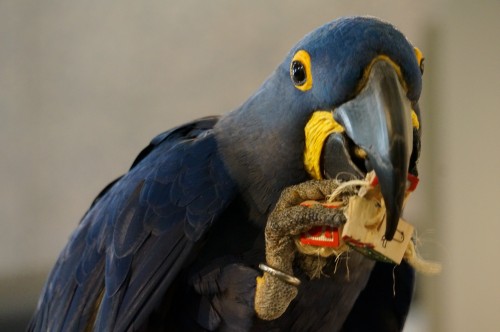
Very much alive (i.e. non extinct) blue hyacinth macaw Margaret was present at the event. Photo by the author.
George Mallory was a mountain climber and one of the English pioneers
to Mount Everest expeditions on the 20′s. Why take on such endeavor? It
was risky, challenging, and with no direct application. So, “why climb
the Everest?”, he was asked.
“Because it is there.”
Sometimes it is all the motivation we need.


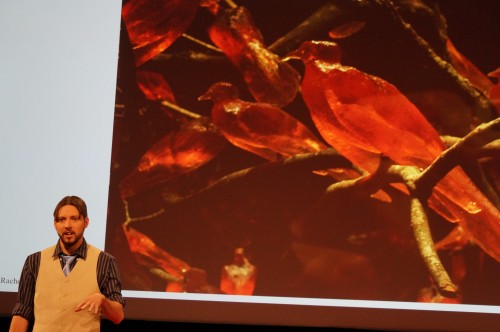
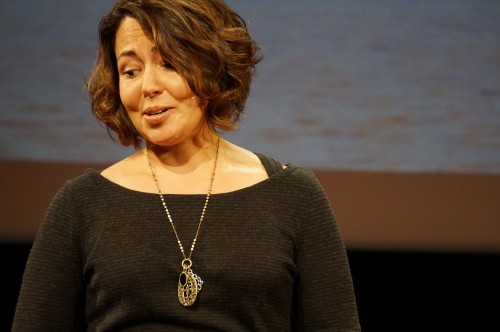
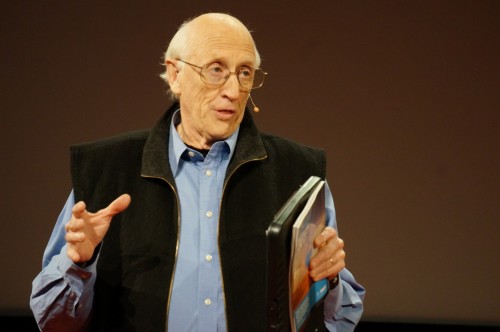
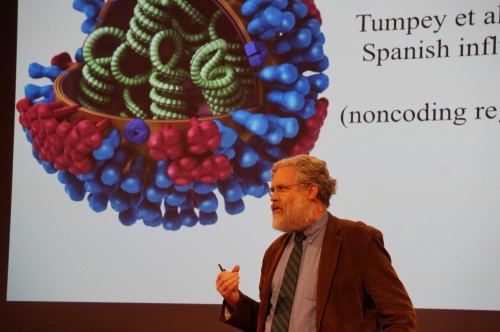





Post a Comment
Thanks for reading my blog.
Note: only a member of this blog may post a comment.